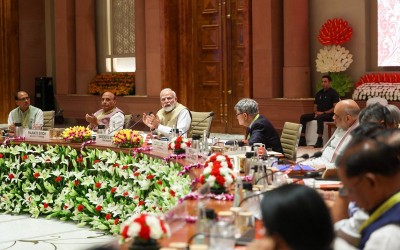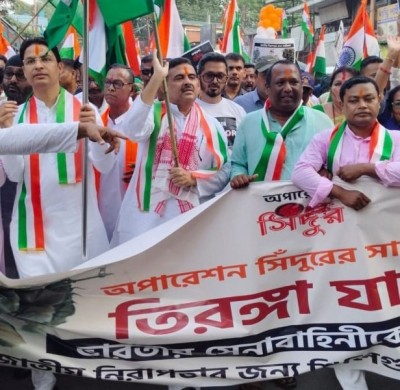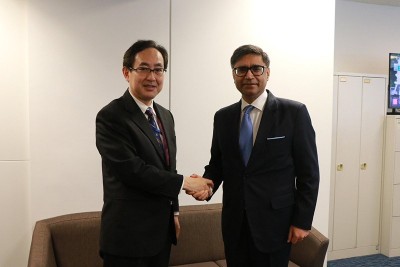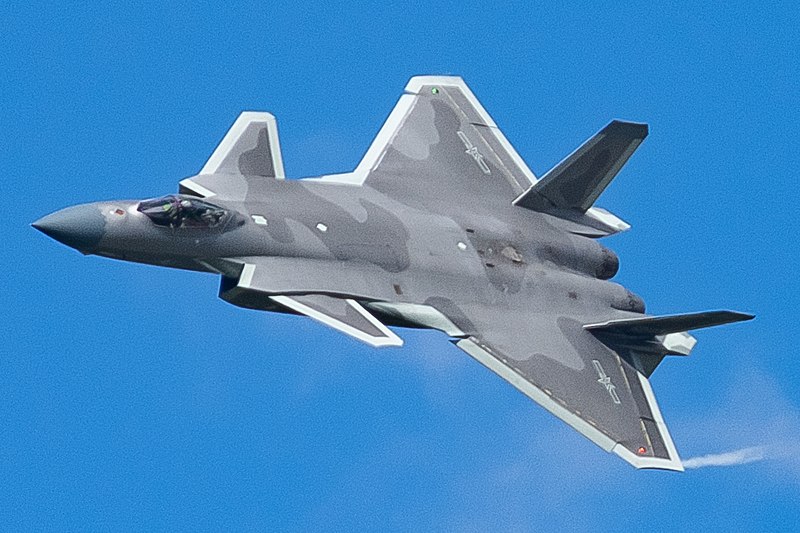 China
China
China’s air power and the myth of J20
The Myth of J20 One of the biggest enigmas of the border war between India and China in 1962 was the question of why India did not use its air power to engage the Chinese army in the Himalayan frontier.
Had the combat air arm of the Indian Air Force been used, the outcome of the border war could have been different.
This was not only because those days the Chinese Air Force was in a nascent stage, but also because of the inherent technical difficulties faced by the Chinese Air Force in operating from the high-altitude plateau of Tibet.
Days have changed; both the Chinese Air Force and the Indian Air Force have grown exponentially in between, but the inherent difficulty of the Chinese Air Force of operating in Tibet remains.
Here, the Indian air force has an inherent advantage over the Chinese which cannot be glossed over by the powerful propaganda machine of Beijing.
The Line of Actual Control where any possible confrontation between the armed forces of the two nations may take place in future is far off from the airfields of mainland China.
To run a war effort, the Chinese air force will have to operate from airfields in the high-altitude plateau of Tibet. Here they will face the technological disadvantage of not being able to take off with a full payload.
Chinese combat aircraft taking off from airfields in Tibet will neither be fully armed nor will their fuel tanks be full. India, on the other hand, has a string of airfields at near sea-level altitudes close to the LAC all along, in Assam, north Bengal and the western parts of the country.
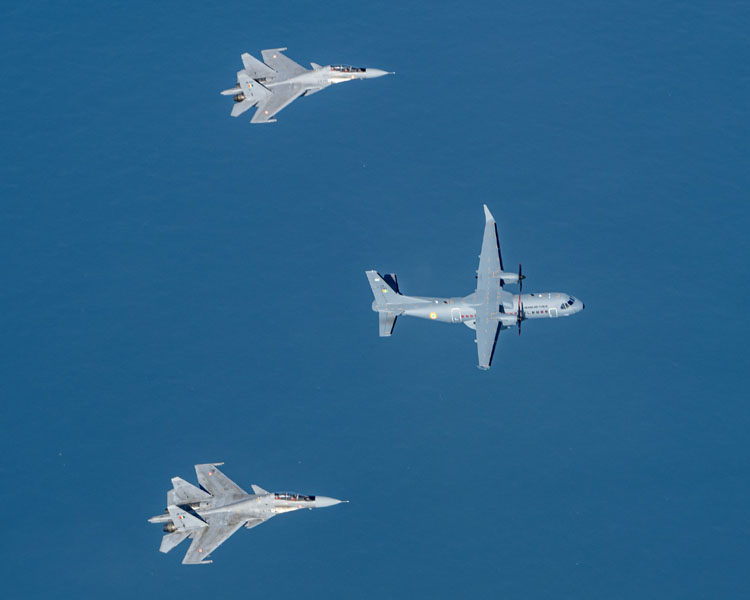 The IAF's first C-295 MW aircraft landed in Vadodara last month.
Photo Courtesy: IAF X page
The IAF's first C-295 MW aircraft landed in Vadodara last month.
Photo Courtesy: IAF X page
Here top-of-the-line fighter planes Rafale, Sukhoi MKI and MIG 29 have been deployed.
These aircraft face no problem of taking off with a full payload of weapons and fuel and will have an inherent superiority over the Chinese aircraft.
Campaign managers of Beijing are labouring much with the J 20 fighter that has been developed by China, claiming it is technologically superior to any aircraft in the Indian arsenal; that the J 20 has been deployed in the Western Theatre Command of the People’s Liberation Army of China which oversees the Sino – Indian border and the induction of this alleged fifth generation fighter aircraft will provide the necessary air superiority over the Indian air force in the Tibet frontier in case of hostilities.
Quoting Chinese experts, Global Times, the mouthpiece of the Communist Party of China, wrote in July 2020 that “Rafale is only a third plus generation fighter jet and does not stand much of a chance against a stealth fourth generation one like J 20.”
To begin with, the Chinese experts as quoted in the Global Times report themselves had admitted that J 20 is not a fifth-generation fighter aircraft at all, it is a fourth-generation one. Stealth fighters that do not leave any signature on the enemy radars are, incidentally, fifth-generation aircraft.
There are only three fifth-generation aircraft in the world today, the American F-35 and F-22 and the Russian Su-57. Former Chief of the Air Staff of India Air Chief Marshal B. S. Dhanoa has further exploded the myth of the technological superiority of the J 20 over Rafale. J 20 has canards while genuine fifth-generation aircraft don’t have them, he has pointed out.
Canards are small forward wings of an aircraft mounted on the fuselage located forward of the main wing.
These improve aircraft control and lift, but leave a signature on the radar. Besides, unlike a fifth-generation aircraft, J 20 cannot attain the super cruise speed exceeding Mach 1, the Air Chief Marshal has pointed out.
Air Marshal Anil Chopra (retired) of the Indian Air Force, too, has been quoted in The EurAsian Times on January 16, 2021 questioning the abilities of Chinese fighter aircraft like J-20.
“While China downplays the quality of Rafale, we have reasons to question the stealth capability of J 20 in view of the crudely shaped, radar signals reflecting canard controls. J 20 uses older Russian engines, poorly designed to conceal both radar and infrared signature.”
The Air Marshal has also raised questions on the reliability of J 20 engines.
“The planned Chinese engine WS-15 is still well behind schedule. It is unknown when the WS-15 will actually be ready. The Rafale engines are time tested, better in terms of reliability, longevity and maintainability.”
There are also questions on the “electronic warfare suite of J-20, which in the case of Rafale is a comprehensive package covering the entire spectrum of threats.
The EW suite is the ability of an aircraft to use electromagnetic spectrum waves to intercept and disrupt enemy electronic systems or protect its own assets using the same.
The Chinese air force has already deployed the J 20 in the Tibet sector in the fond hope that this fighter jet will help China attain parity in air power with India along the Line of Actual Control, but that is not the reality.
On September 22, 2022, air force spokesperson of China Senior Colonel Shen Jinke said J20 had been deployed across all the five theatre commands of the Chinese armed forces, including the western one which faced India.
“We have certain advantages. We will operate fighters that would be carrying full payloads taking off from Punjab whereas the Chinese fighters will have to operate from the oxygen-depleted Tibetan plateau,” a senior official of the Indian military establishment has been quoted in the magazine The Week.
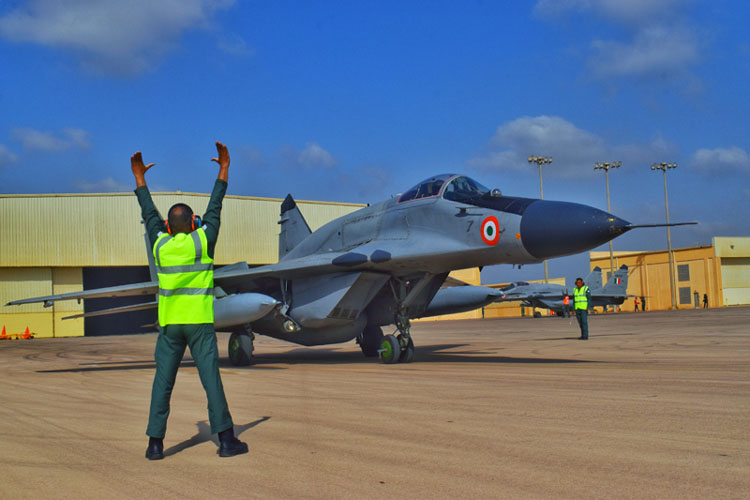 IAF technicians working to prepare aircraft for Ex-Bright Star 23. Photo Courtesy: IAF X page
IAF technicians working to prepare aircraft for Ex-Bright Star 23. Photo Courtesy: IAF X page
Aircraft cannot utilize their full capacity and efficiency when operating from oxygen-depleted terrain like the 4,000-metre-high Tibetan plateau. Campaign managers of the Communist Party of China seem to have lost the sense of proportion while eulogizing the qualities of the J 20, even going to the extent of comparing it with F-35 and F-22 of the U.S. --- “capable of challenging the best the U.S. has to offer”- -- and also the Su 57 of Russia.
An analyst from the Beijing-based Yuan Wang Military Science and Technology Think Tank has, however, spilled the beans.
The American XA 100 engine that powers the F-35 remains at least 10 years ahead of the WS-15 that powers J 20.
“China has so far just matched the American engines in some areas, but not in overall performance. It is also not meaningful to emphasize one area because military confrontation is about a competition of systems and a contest of joint operational capabilities,” the analyst has noted.
The J 20 suffers from significant drawbacks, it has been pointed out. The engine systems that power the jets remain the most controversial aspect of the aircraft.
The Chinese army had initially used Russian engines for J 20 but switched to domestic production when these were underperforming. It was still unclear if the domestic production of the engines was on schedule and how efficiently they were working.
The biggest drawback of the J-20 is that it has not yet been tested in battle; the aircraft has not yet been engaged in any kind of warfare activities that may showcase its ability to fight or conduct any mission. The French aircraft Rafale which India has acquired as an answer to J 20 has proven capabilities in Central African Republic, Libya, Mali, Afghanistan, Iraq and Syria.
Rafale has the ability to supercruise and its radar signature is comparable to the best in the world.
Rather than the fighter aircraft of China, the more important threat to Indian aircraft in Tibet is the large number of surface-to-air missiles deployed on the plateau, analysts have said.
In the open plateau of Tibet without any cover of vegetation, however, these missile systems can be sitting ducks for the SCALP air-to-ground missiles and Meteor beyond visual range missiles in possession of the Indian Rafale, experts have argued.
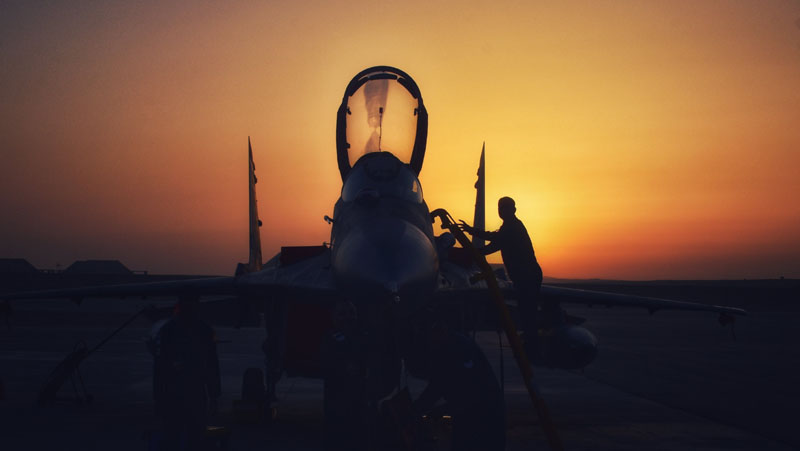 IAF technicians working to prepare aircraft for Ex-Bright Star 23. Photo Courtesy: IAF X page
IAF technicians working to prepare aircraft for Ex-Bright Star 23. Photo Courtesy: IAF X page
The combat assets of the Indian Air Force deployed in air bases that overlook the China border include Rafale, and Su-30 MKI. Mig-29, Mirage 2000 and Jaguar.
The S-400 air defence system has also been deployed to take on enemy aircraft and missiles from a distance of 400 km.
A recent addition to the lethal strike force deployed by India on the China border is the predator drone MQ-9B which will add significantly to the capability of the Indian army to keep surveillance on the Line of Actual Control at high altitudes and also to make precision strikes when necessary.
In fact, the Indian army has already inducted drones in large numbers and set up airstrips to launch them. These unarmed aerial vehicles have added significantly to the capacity of the Indian army to maintain surveillance on the China border and prevent surreptitious intrusions by the Chinese army across the LAC.\
(Images Courtesy: Wikimedia Commons and IAF X page)
Support Our Journalism
We cannot do without you.. your contribution supports unbiased journalism
IBNS is not driven by any ism- not wokeism, not racism, not skewed secularism, not hyper right-wing or left liberal ideals, nor by any hardline religious beliefs or hyper nationalism. We want to serve you good old objective news, as they are. We do not judge or preach. We let people decide for themselves. We only try to present factual and well-sourced news.





